If you want to calculate battery charging time, all you need to do is divide the battery capacity (Ah) by the charging current. Here's the battery charge time calculator formula:
Battery Charge Time = Battery Capacity (in Ah) ÷ Charging Current (A)
For example, if you have a 10Ah battery charged with a 5A current, the battery charge time will be 2 hours. With simple calculations, you can estimate how long it will take to fully charge the battery.
Jackery Portable Power Stations are battery backups that can power essential indoor or outdoor appliances for hours. They feature LiFePO4 or NMC batteries that can be charged with an AC outlet, solar panels, and a car charger. If you don't have an electricity outlet nearby, you can use solar panels to charge the battery. On the other hand, if you want to charge the battery during cloudy days, consider using the AC outlet or a car charger.
In this article, you'll learn:
- Battery charging time is the amount of time a battery takes to achieve a full charge.
- The simplest method to calculate the battery charging time is by dividing the battery capacity in Ah by the charging current in A. Formula: Charging Time = Battery Capacity ÷ Charge Current.
- For an accurate charge time calculation of different battery types, you can multiply the charge current by the charge efficiency of the battery and then divide it by the battery capacity. Formula: Charge Time = Battery Capacity ÷ (Charge Current × Charge Efficiency).
- If you have a C rating for the battery, you can divide the battery capacity in Ah by the C rating. Formula: I (Current in amps) = Ah (Battery capacity) ÷ C# (in Hours).
- To calculate the battery charging time based on Depth of Discharge (DoD), you need to multiply the battery capacity by the DoD and the charge current by the charge efficiency. Divide both the answers to get the battery charging time. Formula: Charge Time = (Battery Capacity × Depth of Discharge) ÷ (Charge Current × Charge Efficiency).
- Jackery Portable Power Stations are portable battery backups that can be carried anywhere to power indoor or outdoor appliances. These can be recharged in just a few hours using solar panels, car chargers, and wall outlets.
What is Battery Charge Time?
Battery charge time refers to the total time required to fully restore the battery's capacity after it has been discharged. The time can vary significantly depending on the battery type, battery size, Battery Management System, and the charging method.
How to Calculate Battery Charging Time?
There are multiple methods to calculate the battery charging time manually without using the 12V battery charge time calculator. Let's briefly explain them below.
Method 1: How to Calculate Battery Charging Time in Electrical Units
The battery charging time means the time taken to fully charge the battery of a portable power station or solar generator. It is crucial to understand how long the battery can charge appliances.
Charging Time = Battery Capacity ÷ Charge Current
Most often, the battery capacity is rated in amp hours (Ah), and the charge current is in amps (A).
Charge Time = Battery Capacity (Ah) ÷ Charge Current (A)
If the battery capacity is expressed in milliamp hours (mAh), watt hours (Wh), or kilowatt hours (kWh), you can follow the below formulas.
Charge Time = Battery Capacity (mAh) ÷ Charge Current (mA)
Charge Time = Battery Capacity (Wh) ÷ Charge Current (W)
If the units are mismatched, you'll have to use the conversion formulas.
Some conversion formulas are:
Watt hours = Amp hours × Volts
Milliamp hours = Amp hours × 1000
While this battery charge time calculator formula is simple, it is the least accurate.
Example: Suppose the battery capacity is 200Ah, and the charging current is 20 amps. In this case, the battery charge time will be:
Charge Time = 200Ah ÷ 20A = 10H.
Method 2: How to Calculate Battery Charging Time with Different Types
The battery charging efficiency is the ratio between the energy consumed by the charging process and saved battery energy.
For instance, if the device consumes 10,77kWh and the battery saves around 9,62kWh of that energy. This means the energy loss is approximately 11%, and 89% of the energy is held in the power station.

Here is the deep cycle battery charge time calculator formula by taking charge efficiency into account.
Charge Time = Battery Capacity ÷ (Charge Current × Charge Efficiency)
One important thing to keep in mind is the type of rechargeable battery.
Lithium-ion Battery: It is one of the commonly used battery types that offer the highest energy density and can store more energy. It has an efficiency of 90-95% and can last longer than other types.
Lead Acid: These rechargeable batteries have an efficiency of 80-85%. They are less expensive compared to lithium-ion and have a shorter lifespan.
NiCd: Nickel-cadmium is a popular type of battery for toys, flashlights, and digital cameras. They have an efficiency of 70-85% and have low internal resistance.
NiMH: They are high-density batteries but can only be recharged about 500 times. Like NiCd, NiMh batteries have an efficiency of 70-85% and work at full capacity until discharged.
Example: Let's calculate the charging time of a lithium-ion battery having 3000mAh, 24W charging rate, 12V voltage, and 90% charging efficiency using a 12V battery charge time calculator.
First, you'll need to convert the charging current (24W) into amps.
Amps = 24W ÷ 12V = 2A
Similarly, convert the battery capacity from mAh to Ah.
Ah = 3000mAh ÷1000= 3Ah
Charge Time = 3Ah ÷ (2A × 90%) = 1.67H
Method 3: How to Calculate Battery Charging Time with Charging Current
Charging current means the amount of current flowing into the battery when it is being charged or discharged. It depends on battery size, chemistry, and the charging method.
A battery's C rating means the rate of time that it takes to charge or discharge. The C rating is generally denoted by numbers like C5, C10, and so on, where C is capacity, and the number is time (usually represented in hours).
I (Current in amps) = Ah (Battery rating) ÷ C# (in Hours)
Example: Suppose you have a battery of 200Ah with a C10 rating. The charging current can be calculated by substituting the values.
Charging Current = 200Ah ÷ 10H = 20A
|
Battery AH |
100AH |
100AH |
100AH |
|
Capacity (in Hours) |
C5 |
C10 |
C20 |
|
Battery AH ÷ Capacity (in Hours) |
100AH ÷ 5H |
100AH ÷ 10H |
100AH ÷ 20H |
|
Charge & Discharge Current |
20A |
10A |
5A |
Method 4: How to Calculate Battery Charging Time with DoD
The battery's depth of discharge and battery discharge are the two terms you'll need to consider while calculating the charging time with the AGM battery charge time calculator.
Depth of discharge is generally defined as the capacity discharged from a fully charged battery, divided by nominal battery capacity. In other words, DoD indicates the discharged battery percentage relative to overall battery capacity.
Battery discharge means the battery capacity in amp-hours (Ah) divided by the hours it takes to charge/discharge it. You can calculate the charge time of a battery concerning DoD using the below formula.
Charge Time = (Battery Capacity × Depth of Discharge) ÷ (Charge Current × Charge Efficiency)
Example: Let's say you want to calculate the charge time of a 100Ah lead acid battery with a 50% DoD. The charging efficiency of the lead acid battery with a 10A charging current is 80%.
Charge Time = (100Ah × 50%) ÷ (10A × 80%) = 50Ah ÷ 8A = 6.25H

Jackery Portable Power Stations Explained
Jackery is a renowned manufacturer of superior-quality solar products, such as solar panels, power stations, and solar generators. Jackery Portable Power Stations are battery backups that feature multiple ports to power appliances.
These battery backups are equipped with LiFePO4 or NMC known for their long lifespan and durability. You can recharge these batteries using Jackery SolarSaga Solar Panels, wall outlets, and carports in a few hours.
You can calculate the working hours of the Jackery Explorer Portable Power Stations on each product page.
Below we reveal popular Jackery Explorer Portable Power Stations with their features and recharging time.
Jackery Explorer 300 Plus Portable Power Station
Featuring a compact-size battery capacity, the Jackery Explorer 300 Plus Portable Power Station can power small appliances efficiently. The multiple output ports help you power multiple appliances simultaneously, making it convenient for outdoor use. It also features a foldable handle that ensures you can carry the portable power station to outdoor hiking or camping trips.
Recharging Time
- USB Charging: 2.8 Hours
- Car Adapter(12V): 5.5 Hours
- 1 x SolarSaga 40W Solar Panel: 9.5 Hours
- Wall Charging: 2 Hours
Appliance Running Time
- Smart Speaker (10W): 11.8H
- Camping Lights (50W): 3.9H
- CPAP Machine (40W): 4.7H
- TV (150W): 1.5H
- Mini Fridge (200W): 1.1H

Who Should Buy This
If you love to enjoy outdoor activities, such as short camping trips, hiking, backpacking, and fishing, you'll definitely appreciate the compact Jackery Explorer 300 Plus Portable Power Station that can fit right in your backpack.
Customer Review
"Having 5 power outages in the last 3 months. All with severe thunderstorm & tornado warnings. The 300 Plus has been steadfast keeping my modem running. Also charging the IPad & cell phone. The longest was 7 1/2 hours." — Russell Snitker.
Jackery Explorer 1000 Plus Portable Power Station
Jackery Explorer 1000 Plus Portable Power Station has a large battery capacity that can power most indoor and outdoor appliances efficiently. If you are planning a camping or RV trip, you can consider storing the portable power station in the rear compartment of the vehicle. It ensures your coolers, CPAP machines, or air fryers remain powered on the go. It supports three add-on battery packs to expand the capacity, making the battery backup ideal for outdoors and emergencies.
Recharging Time
- AC Adapter: 1.7 Hours
- Car Adapter (12V): 7 Hours
- 4 x SolarSaga 200W Solar Panel: 2.5 Hours
- 2 x SolarSaga 100W Solar Panel: 9 Hours
Appliance Running Time
- Coffee Maker (800W): 1.3H
- Refrigerator (300W): 3.3H
- Electric Stove (1000W): 1.0H
- Oven (800W): 1.3H
- Air Fryer (900W): 1.1H

Who Should Buy This
If you're looking for a battery backup solution for indoor and outdoor adventures that offers more power in a smaller size and can be expanded as the power needs grow, you can consider investing in the Jackery Explorer 1000 Plus Portable Power Station.
Customer Review
"Originally bought a Jackery as an emergency backup for our refrigerator. Discovered there were nearly infinite uses for these & now we have three units, two battery expansion packs & solar charging panels. The Jackery Generators are the best we’ve used!" — Z. Finley.
Jackery Explorer 2000 Plus Portable Power Station
Jackery Explorer 2000 Plus Portable Power Station can charge multiple electrical appliances simultaneously. It has a large battery capacity that is ideal for powering 99% of your home or outdoor appliances. It's ideal for home backup power, off-grid living, and long RV or camping trips. If you live in an area prone to power outages, the battery capacity can be expanded from 2kWh to 24kWh with the help of add-on battery packs.
Recharging Time
- AC Adapter: 2 Hours
- Car Adapter (12V): 25 Hours
- 6 x SolarSaga 200W Solar Panel: 2 Hours
- 2 x SolarSaga 200W Solar Panel: 7 Hours
- 1 x SolarSaga 500 X Solar Panel: 4.8 Hours
Appliances Running Time
- Refrigerator (300W): 5.3H
- Electric Grill (1500W): 1.1H
- Portable AC (1000W): 1.6H
- Water Pump (100W): 14.2H
- Ice Maker (500W): 3.2H

Who Should Buy This
If you want to live off-grid or in an RV and need a battery backup for powering essential appliances, you can consider the expandable Jackery Explorer 2000 Plus Portable Power Station.
Customer Review
"I bought this as a backup to my gas generators if there ever is an issue finding gas during a power outage. I bought two to connect together with two extra batteries. Testing worked fine connected to my house's transfer switch. I was running two full-size fridges, a full-sized freezer, two TVs, and two lights. After 2 1/2 hours, I was down to 75% without the solar panels connected. " — Dan Kuntz.
Jackery HomePower 3000
The Jackery HomePower 3000 is an essential home backup power solution with a large battery capacity. It can run essential household appliances, such as refrigerators, lights, fans, and WiFi routers, for days. It also features a seamless UPS switch to keep critical home office appliances, such as laptops, desktops, lights, and TVs, powered in the blink of an eye during outages.
Recharging Time
- AC Charging (1800W): 2.2 Hours
- AC+DC Charging (2500W): 1.7 Hours
- 2 × Jackery SolarSaga 200W Solar Panels: 11 Hours
- Gas Generator Charging: 2.2 Hours
- Car Charging (12V): A car charger ensures emergency power needs are met and offers uninterrupted energy while on the move.
Appliances Running Time
- Refrigerator (400W): 6.2H
- TV (150W): 15.2H
- Portable AC (1000W): 2.6H
- Oven (800W): 3.2H
- Coffee Maker (800W): 3.2H
Who Should Buy This
If you're looking for an easy home battery backup solution that can power essential appliances and can be recharged faster, the Jackery HomePower 3000 is a reliable option you can consider.
Customer Review
“We bought the Jackery HomePower 3000 as a backup for my fifth-wheel RV while the wife and I travel around the US. We will be doing some boondocking along the way, and we plan on using the HomePower 3000 rather than the noisy and gassy generator.” — Daniel.
Jackery Explorer 5000 Plus Portable Power Station
The Jackery Explorer 5000 Plus Portable Power Station is an essential home backup power solution that can run most household appliances, such as refrigerators, lights, water heaters, etc. It features dual voltage compatibility, ensuring that appliances working at 120V or 240V can be easily powered with the solar generator.
Recharging Time
- AC Charging: 3.5H
- Charging via Smart Transfer Switch: 1.7H
- 2*Jackery SolarSaga 500 X Solar Panels: 6.5H
- Hybrid Charging (AC, DC, and Solar Panels): 1.7H
- High Voltage PV Charging: 1.7H
Appliances Running Time
- Refrigerator (400W): 9.5H
- Kettle (1000W): 4.1H
- Portable AC (1000W): 4.1H
- Oven (800W): 5.0H
- Coffee Maker (800W): 5.0H

Who Should Buy This
If you want to keep yourself and your home prepared for unexpected power outages and blackouts, the Jackery Explorer 5000 Plus Portable Power Station has got your back.
Customer Review
“We are off the grid, powering our 35-foot Viking using the Jackery 5000 Plus. Well, it’s been awesome not having the generator running. Jackery keeps the boat running with no issues.” — Darryl Ward.
Battery Charge Time Calculator FAQs
What will affect the battery charging time?
Multiple factors, such as battery state, battery capacity, solar panel quality, and solar charge controller efficiency, can affect the battery charging time.
The below table reveals the average time it takes to charge an electric vehicle battery using different chargers.
|
Battery Capacity (kWh) |
Charger |
|||||||
|
2.4 kW |
3.7 kW |
7.7 kW |
11 kW |
22 kW |
50 kW |
100 kW |
120 kW |
|
|
5 kWh |
2h 19m |
1h 31m |
0h 44m |
0h 31m |
0h 16m |
0h 7m |
0h 4m |
0h 3m |
|
10 kWh |
4h 38m |
3h 1m |
1h 27m |
1h 1m |
0h 31m |
0h 14m |
0h 7m |
0h 6m |
|
15 kWh |
6h 57m |
4h 31m |
2h 10m |
1h 31m |
0h 46m |
0h 20m |
0h 10m |
0h 9m |
|
20 kWh |
9h 16m |
6h 1m |
2h 54m |
2h 2m |
1h 1m |
0h 27m |
0h 14m |
0h 12m |
|
25 kWh |
11h 35m |
7h 31m |
3h 37m |
2h 32m |
1h 16m |
0h 34m |
0h 17m |
0h 14m |
|
30 kWh |
13h 54m |
9h 1m |
4h 20m |
3h 2m |
1h 31m |
0h 40m |
0h 20m |
0h 17m |
How long does it take to charge a 100Ah battery with a 20 amp charger?
To calculate the charging time of the battery, you can use the following formula
Charging Time = Battery Capacity ÷ Charging Current = 100Ah ÷ 20A = 5H
However, it's worth noting that the actual charging time varies depending on the battery type, efficiency, etc.
How long should I charge a completely dead battery?
A dead battery means that it's fully discharged and the voltage is below 12V. In other words, a dead battery means no charge is left to charge the appliances.
Recharging a dead battery can take somewhere between 4 hours to 24 hours, depending on its type, size, etc. You can use the battery charge time calculator to find the time required to fully charge the dead battery.
How long does it take to charge a 5000mAh battery?
A 5000mAh (or 5Ah) battery will typically take around 2 - 3 hours to charge, depending on the charging current, battery technology, and size. Let's say you are using a 50W charger with a 2A charge current. The battery charge time can be calculated by dividing the battery capacity in amp-hours (Ah) by the charge current in amperes (A).
Charging Time = Battery Capacity ÷ Charging Current = 5Ah ÷ 2A = 2.5H
How long does a 150Ah battery take to charge?
A 150Ah battery can take 6-12 hours to fully charge, depending on various factors, including the charging current and battery type. Let's say you're using a charger with a current of 15A. In this case, the battery charge time will be 10 hours (150Ah ÷ 15A).
What is the formula for battery time?
The basic formula for calculating battery time is: Time (hours) = Battery Capacity (amp-hours or mAh) ÷ Charge Current (amps or mA). This formula provides an estimate and doesn't account for factors like battery efficiency or discharge rate.
Final Thoughts
If you use a battery backup for a home or a solar generator for off-grid living, using a battery charge time calculator is essential. This will help you calculate the charging time of the battery and protect power stations from undercharging or overcharging.
Jackery Explorer Power Stations are designed for faster charging and recharging. These robust and portable battery backup solutions can be recharged using solar panels, carport, or AC outlets. Once fully charged, you can use the power station to supply stable electricity to your home or outdoor appliances.

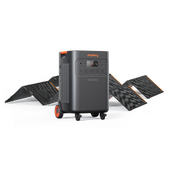
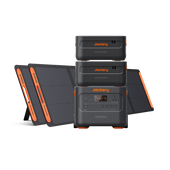
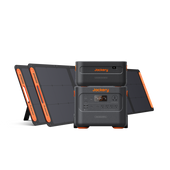

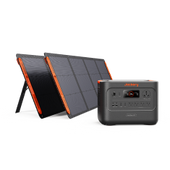

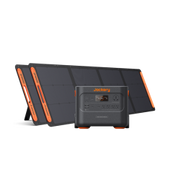
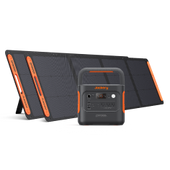

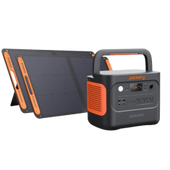
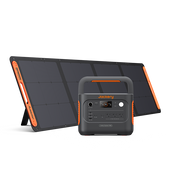
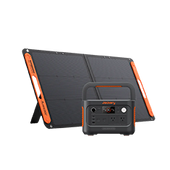


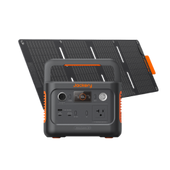
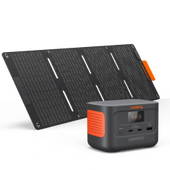
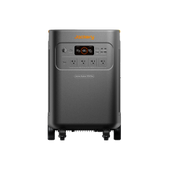
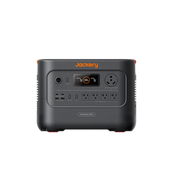
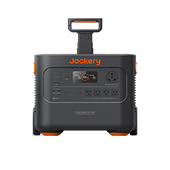
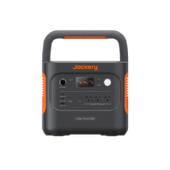
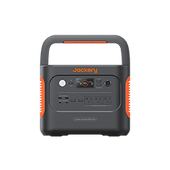
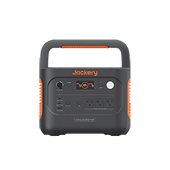

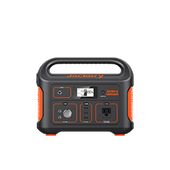
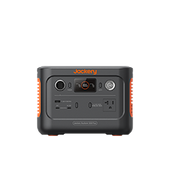

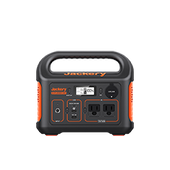

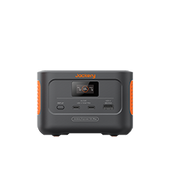
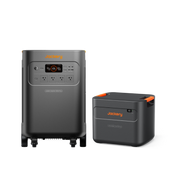
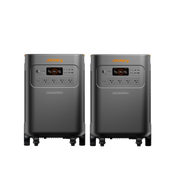
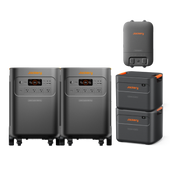


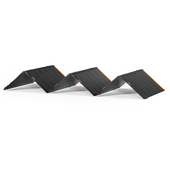
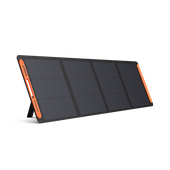
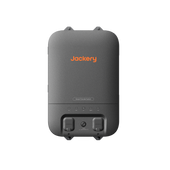
![[Add-on] Jackery Manual Transfer Switch for Explorer 5000 Plus](http://www.jackery.com/cdn/shop/files/800x800-2_5b90d3ab-246e-4679-affe-e7c6949f9c27.png?v=1744356904&width=170)
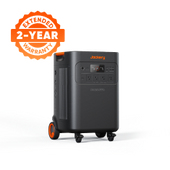
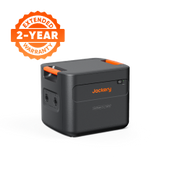

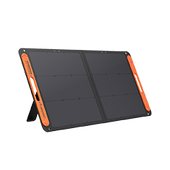
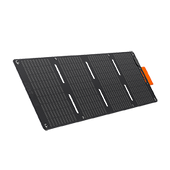

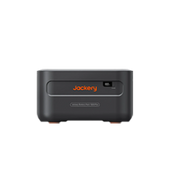













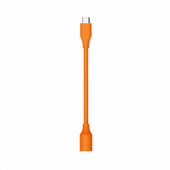


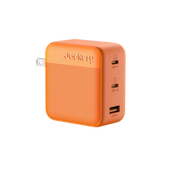
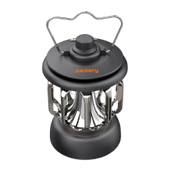


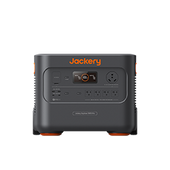
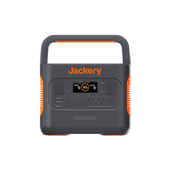
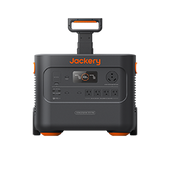

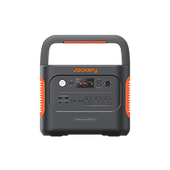
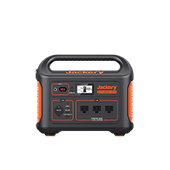

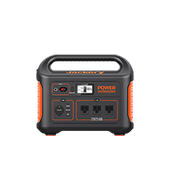
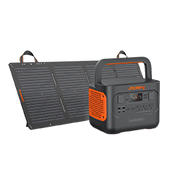

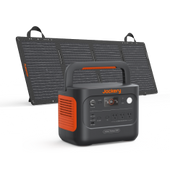








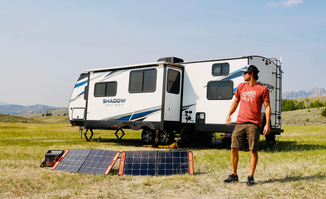












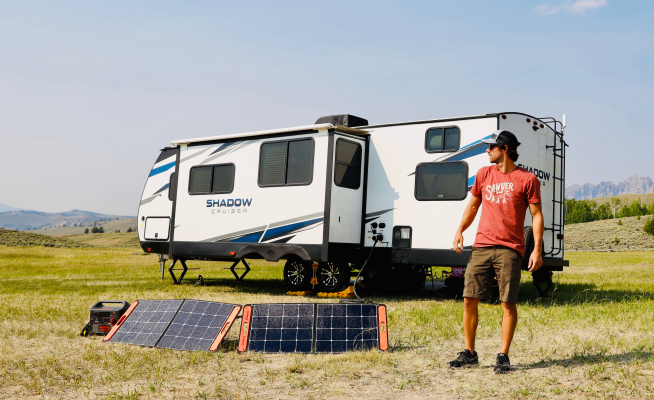


















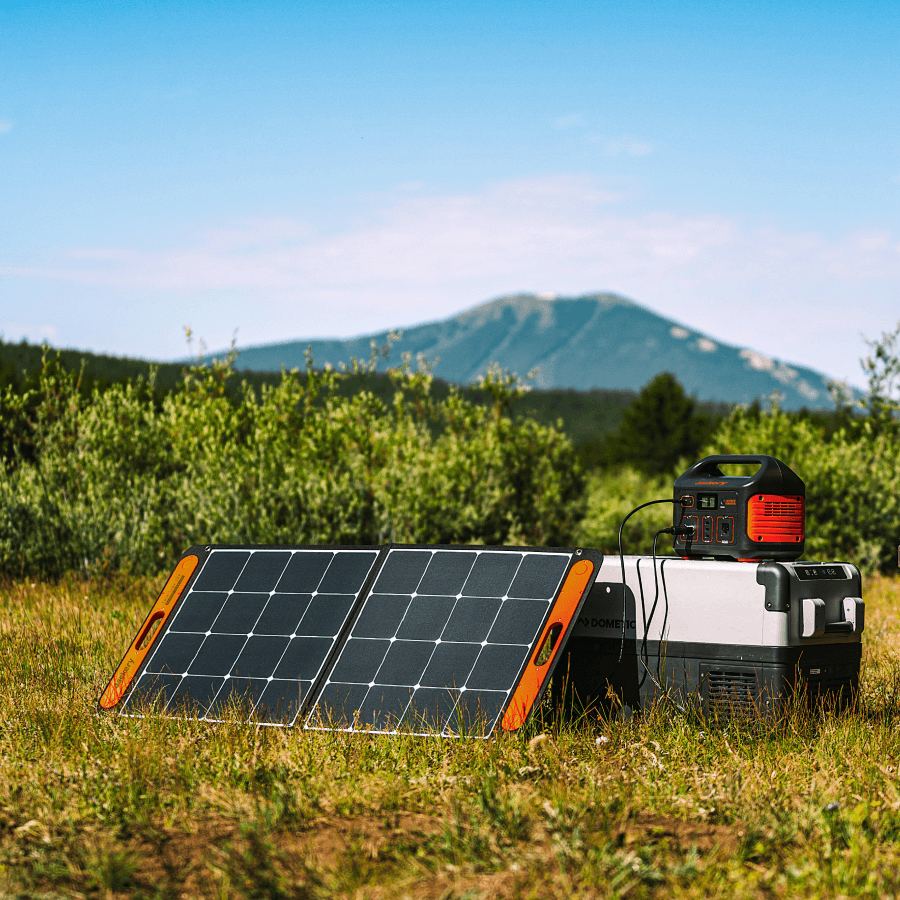

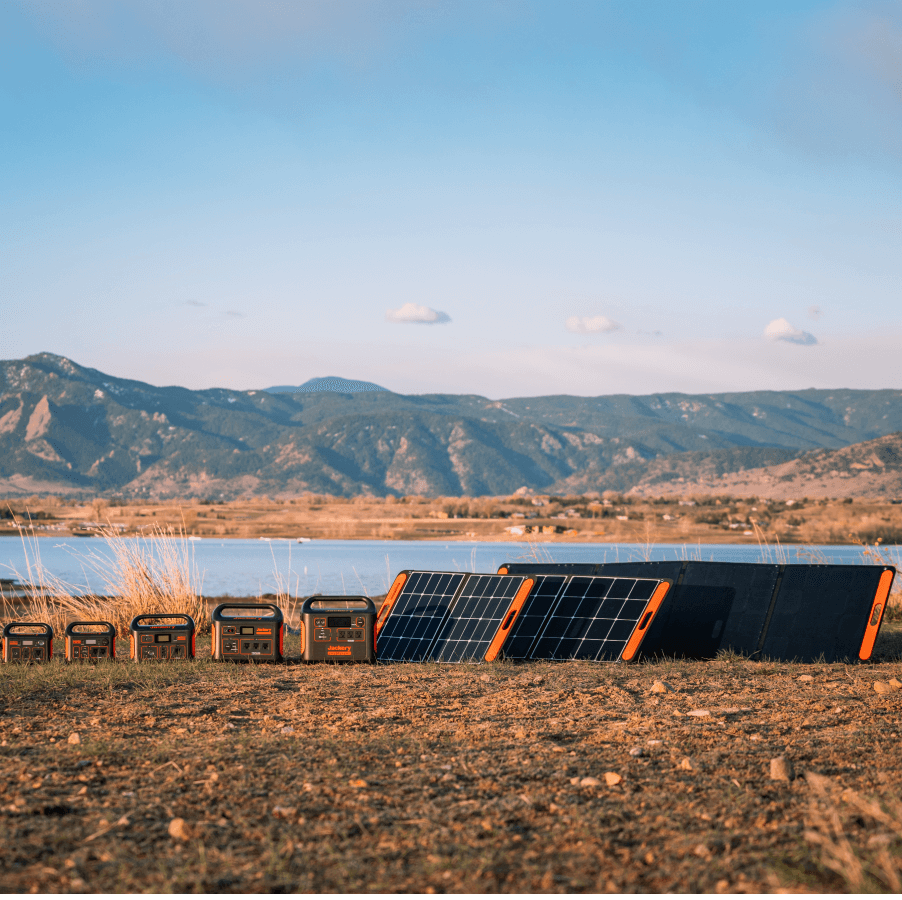

I have a 80watt solar into controller and into a single 200ah battery
Charging at 12.3v. How long to charge from 90% on the battery ?regards wayne
I am interested in the Jackery Explorer 1000 v2 . Would I be able to charge it on a campsite with a limit on the 240volt supply?
Regards
Andrew
I have two Jackery 1000 v2. Can I buy two 400Watts Solar panels (Vmp 40.0V, Imp 10A, Voc 47.2V, Isc 11.0A) since it has been limited 21A/400W Max, is it safe???
Leave a comment